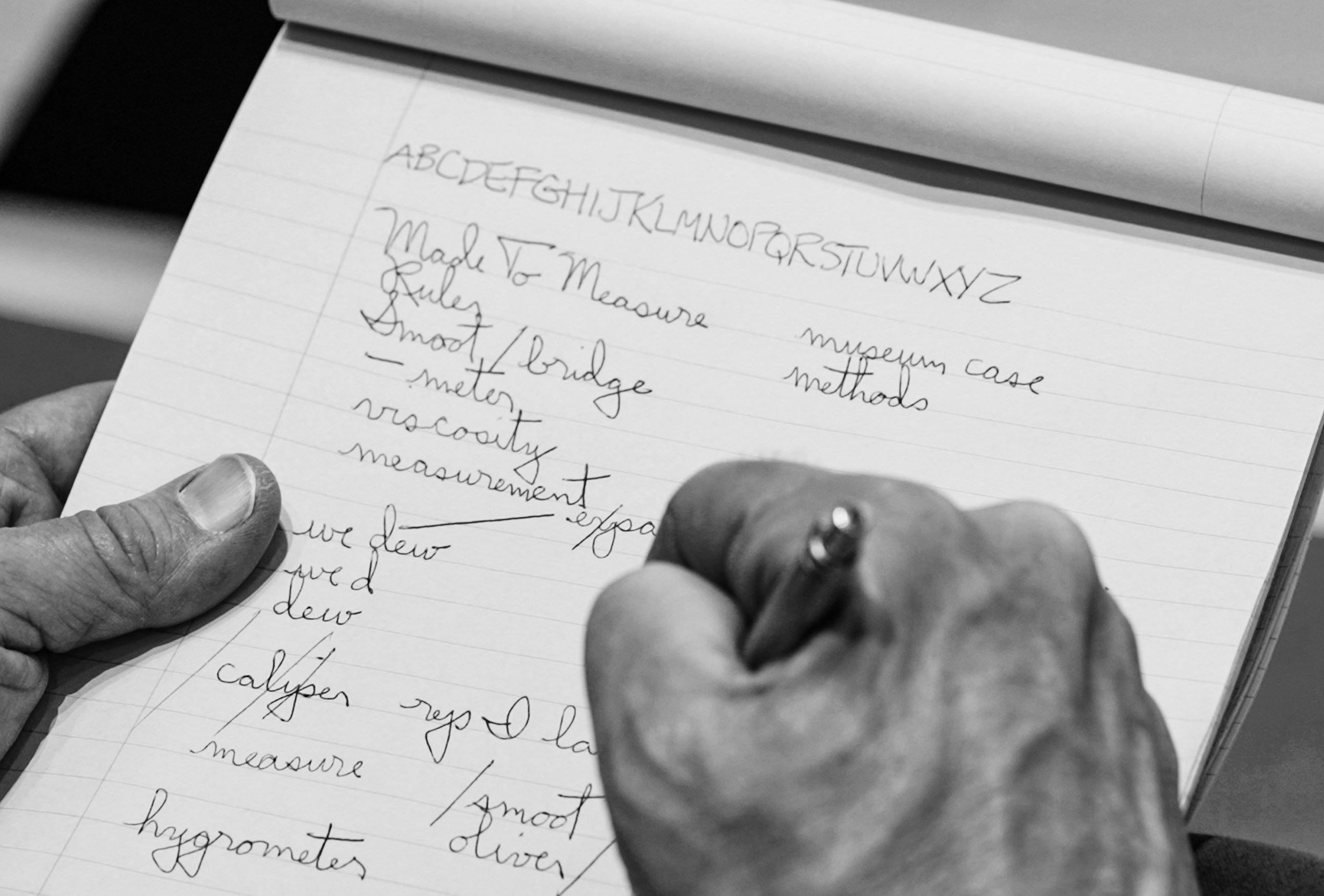I’m sometimes asked how I go about constructing a palindrome. It’s difficult to describe something that often happens instantly—I write a good many palindromes without ever putting pen to paper—but I would say that I begin in the middle and try to evaluate the reversible potential of all pertinent vocabulary. My goals are always the same: to serve the subject, keep that middle point from standing out too obviously, and produce something that sounds as much like normal writing or speech as possible. If I can manage to do that without showing off too much, then I feel that I’ve succeeded.

MELANIE GONICK/MIT
Getting back to those MIT Museum palindromes, here’s one that will give you an idea of how I work. After the museum unveiled its exhibit “Made to Measure,”which contains a smoot bar, it occurred to me that I should write something about Oliver Smoot and the famous measuring event that took place on the Massachusetts Avenue Bridge. In the completed palindrome, there are a few things that are not badly done: a nicely concealed, ironic middle (“tall? a frat star?”), the anticipated eponym (“name’s unit”), and an acknowledgment of all the lying down and standing up that was involved in the process (the words “fall” and “up”). This one was written very quickly. Every word is doing exactly what it’s supposed to do, there’s nothing extraneous, and I must confess that I’m not displeased with it. Take a look.
So, put in use: Man—tall? a frat star?—fall at name’s unit. Up, O.S.!
Now I fear that I’m talking too much in one direction about writing in two directions, and that my audience is starting to experience “reversibility fatigue.” So it’s probably time for me to thank you for your patience and interest and be on my way. But I hope I’ve managed to give some impression of the great joy I take in my craft, and the gratitude I feel toward the MIT community for responding so positively to it. Perhaps I’ve even inspired you to try your hand at palindrome writing. To start, just reverse every single word you encounter (in a book, in a conversation, in a sign on a commuter train). Please don’t worry that it’s too challenging an undertaking, or that it may be a very long time before you compose a palindrome that makes any sense. After all, it’s as easy as learning to drive: in two directions at the same time.
Barry Duncan is a bookseller at the MIT Press Bookstore and a master palindromist. The longest palindrome he has written is 2,583 characters—more than 800 words—long.
